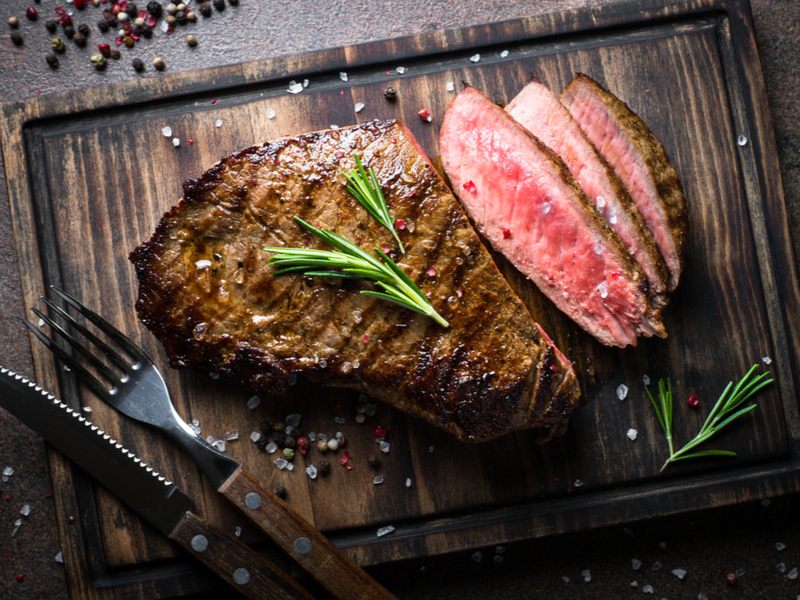Best Tips to Elevate your Home Cooking Skills

Home cooking might be something you’ve wanted to dab into for some time now. If you’re only starting now, that’s absolutely alright! It’s never too late to learn the fine art of cooking in the comforts of your own home.
And learn you must — after all, every single person needs to eat at some point, including you.
Relying on fast food or others to cook for you is all well and good every now and then. But what happens when those luxuries are taken away? Much like now, when the business of things is far from normal.
So here you are, trying to do your best to improve your home quarantine cooking skills. Worry not, we have a few tips on this list that might help.
Why is Cooking at Home Better?
The history of cooking food is a very long one. Some thousands of years ago when humankind discovered fire, they also learned the ability to mince, chop, mix, and prepare hearty meals instead of simply eating raw meat and crops.

Now, you get to experience the same rediscovery of using your hands to create something new and delicious.
The food industry and cooking practice in general is oddly gendered. If this surprises you, it’s probably because it’s been the norm for so long. For many centuries, preparing meals and feeding the family has been deemed as a woman’s work. Biased as that may don’t let it hinder you from practicing.
Not to mention, home cooking has something of a therapeutic effect. You focus on sorting ingredients, cutting them up, measuring, and losing yourself in the rhythm of the kind of domesticity that has been known since time immemorial. It keeps both the hands and the mind busy and relaxed at the same time.
The biggest plus of cooking your own food is knowing what you put in it. You can carefully select ingredients that are fresh, naturally grown, and in the best of quality. However, it is understandable that much of cooking also has to do with financial capabilities.
While good ingredients are needed for the best results, it does not necessarily have to be expensive.
Making do with what you have is a practice that many, including perhaps even your own ancestors, have done. Using what available resources is nearby is at the root of some of the world’s greatest cuisines.
Even so, that’s no excuse to slack off on polishing your skills! There are many surprisingly simple ways to whip up scrumptious meals.
How can I Teach Myself to Cook Better at Home?
Believe it or not, recipes are more often than not self-taught. Most professional chefs agree that at the heart of a favored recipe is its own uniqueness.
Brought about by the imaginative and sensitive palette of the cook, some say that the more personal a recipe is the better it will be — gives it heart and character, if you will.
Teaching yourself to cook better is not only possible but commendable as well. Not everyone can get into a fancy French cuisine course, but that doesn’t mean you should settle for canned and instant food. That’s what the internet is for!
And even before that, cookbooks and recipe lists carefully passed down through generations were a thing of family affairs.
There are plenty of simple enough recipes to try out for the first time. Fried food can be even more delicious — and made more healthy — if you can change up a bit of the ingredient and add a pinch or two of spices you’ve never touched in your pantry before.
You can also start with steamed, sauteed, or even just mixing up raw ingredients for a new salad mix.
A good tip is also knowing when and where to buy your ingredients. While the grocery store is a quicker and more convenient place for shopping, it is at the farmers’ markets that you get the best and freshest produce.
Good farmers practice the best agricultural methods and take pride in what they harvest. The food will most likely be GMO-free and just overall be a better option.
Use Your Hands
Ever heard of catchphrases like “healing hands” or “green thumbs”? Anything relating to hands that compare to some kind of tool or weapon is actually pretty accurate.
Your hands are your first and best kitchen tool, and sometimes all that you need. Mixing, kneading, seasoning are all done by hand. You can control the motions and pressure unlike any other tool in existence.

Try prodding a piece of meat — cooked or uncooked — and you’ll see for yourself if it is tender enough to serve or needs another ten minutes in the oven. Even mixing salad, toss the spoons aside!
Rubbing the vinaigrette thoroughly with the ingredients is sure to make your salad absorb more flavor. You can also use your hands to season more accurately.
A pinch of salt is different compared to a somewhat similar amount in a teaspoon. Using your hands and arms are a big plus to improving cooking skills for sure. However, keeping them clean is equally important.
When handling food, or anything really, cleanliness is always vital for safety and health reasons. Wash them before, during, and after your home cooking session.
Try Adding CBD to your Dishes
As popular as it has been in recent years, you’ve probably heard of Cannabidiol once or twice. Maybe read an article online about its many wondrous health benefits. CBD, as it is more commonly known, is a hemp-derived cannabinoid known for its anti-inflammatory, analgesic, antioxidant, and relaxing properties.
Unsurprisingly, it has gained fame in the health community.

Users take for a multitude of things — from migraines, chronic pains, sleeping problems, anxiety, weight loss, energy boost, to being a supplement for overall good health in the body.
It can be taken in different ways as well. Some prefer more traditional ways like CBD oil tinctures, topicals, and topicals. Others prefer the latest trends like CBD gummies, lip balms, and vapes.
Looking for something new to try and with the added benefits of health too? Look no further. CBD-infused food and drink will be your latest great contribution to the next potluck. There are many ways to add CBD into your recipe.
The easiest is to mix a generous amount of oil tincture to whatever dish you’re making. Whether fried, soup base, or fruit punch, it’s all good.
Not to worry, you won’t be cleaning up after intoxicated guests after meals. CBD products are completely non-psychoactive as it only contains 0.3% THC, the cannabinoid responsible for the infamous weed high.
In order to be considered legal, hemp products need to abide by this limit. Therefore, you can go nuts — or roast, bake, saute, fry — with CBD oil as much as you like.
Switch to Sea Salt
Proper seasoning is at the very heart and soul of a good recipe. Home cooking doesn’t excuse you from venturing outside of the usual bland instant food in the cupboards. Knowing when to season the food is also very important.
As it is, many are half afraid to even use salt, much less other herbs, and spices, in their concoctions.
According to professionals, this is one mistake that you don’t want to make. Salting throughout the cooking process builds flavor and allows you to adjust just how much seasoning you need.
Best of all, it keeps you from dumping half a tablespoon’s worth on your plate after the meal is cooked. Salt, after all, is meant to go with the cooking and not much after.
Sea salt is best as it would give you that tart and seasoned taste. There are also other varieties you can try, of course, Kosher, Himalayan, and rock salt are some examples.
Keep it in a small jar with a big opening so you can reach in and get a pinch at any given time during cooking. Remember to put in a good amount, but not too much!
Let Roasted Meat Sit Before Eating
So you’re having steak night but have some idea of how to begin. You’re done cooking your T-bone to perfection, brown and juicy on the surface. Do you cut it next and immediately dig in? Not quite yet.

Where meat is concerned, most want the end result to be medium rare or medium at the most. Others prefer it more cooked thoroughly and chewy to bite.
Whatever the case, you need to let the meat sit first before eating it. Home cooking is all about patience, after all. As the meat is cooked, the proteins in it are heated up and set as well. When the proteins are set, they push the meat’s juices towards the center.
Removing the meat from the heat source and letting it rest, so to speak, allows the juices to flow back in and redistribute.
This makes the insides of your steak much more tender and juicy. Place the cooked meat on a serving platter and cover loosely.
Depending on the size, roast beef is best rested for 10 to 20 minutes before serving. Steaks take quicker, only for around 5 to 10 minutes. The rule of thumb for chefs is to let every 100g of meat rest for 1 minute.
Final Thoughts
Home cooking is as much work as it is leisure. Now that most of us are stuck at home, it is the perfect opportunity to get acquainted with the kitchen once more. Moreso, learning how to cook not just for oneself but also for loved ones is a pleasure on its own.
The way to any person’s heart is indeed through the stomach. Not only that, but creating something from scratch is also oddly satisfying.
While being a good cook doesn’t magically happen overnight, practice does make perfect. If you have housemates who are good at the art of cooking, observing their process is a good learning curve. Give your parents a quick call and ask for family recipes.
Start off with simple dishes and work from there. It doesn’t have to rival Michelin restaurants but serving a hot and hearty meal prepared with care will always put a smile on everyone’s face, including your own.



